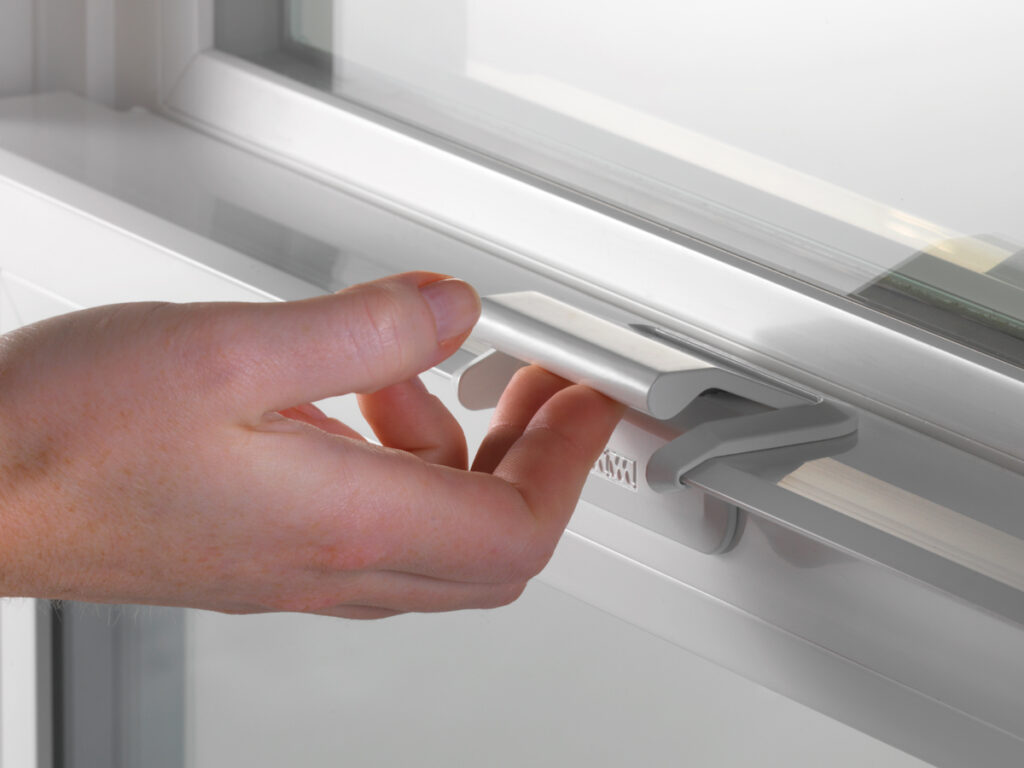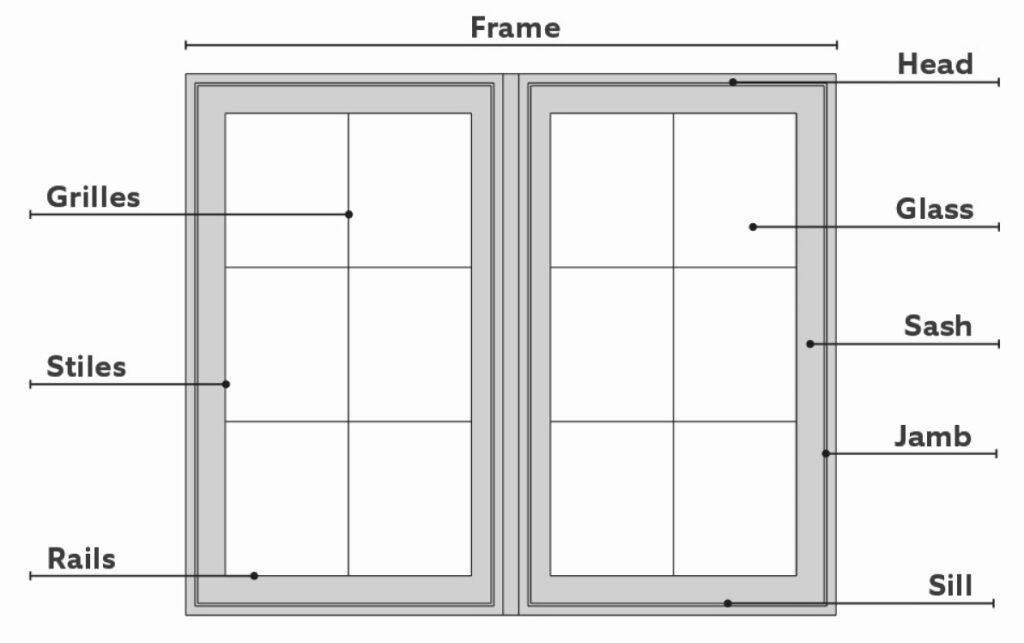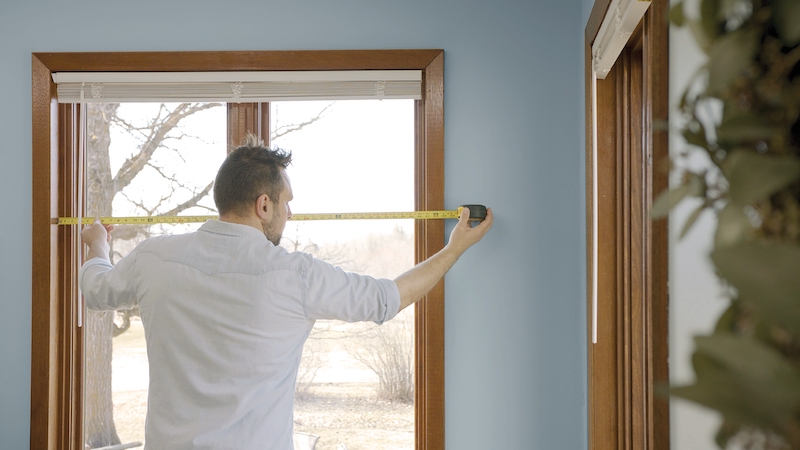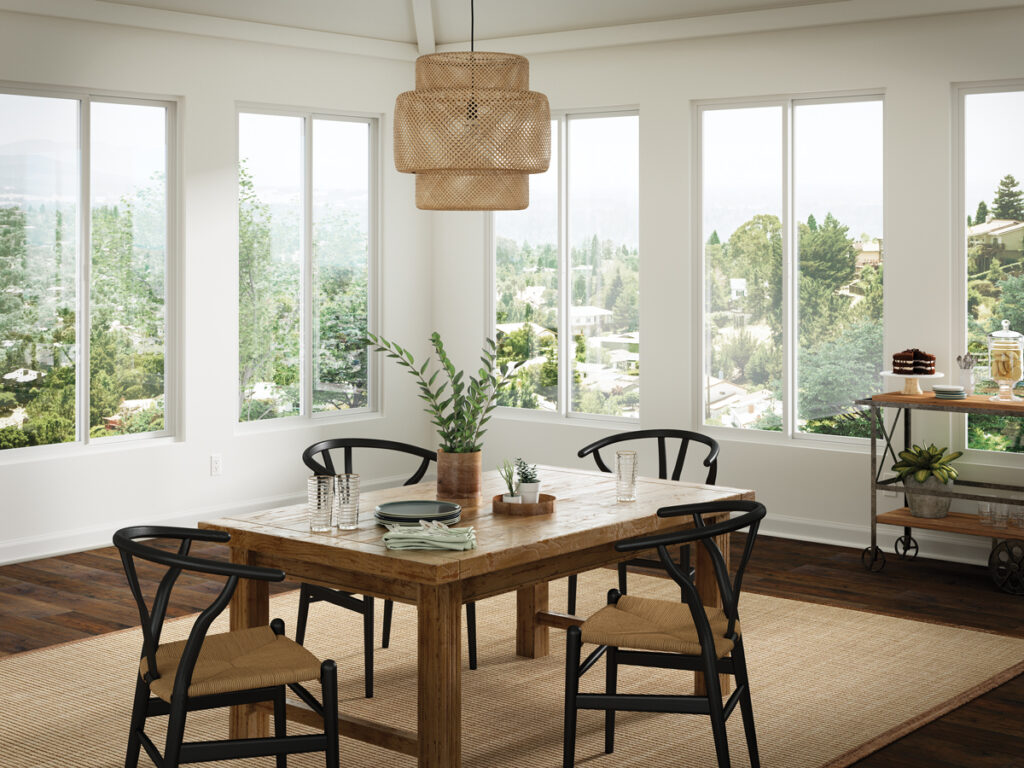When it comes to home improvements, replacing your basement windows might not be the first project that comes to mind. However, it’s a crucial update that can enhance your home’s energy efficiency, security, and overall comfort. Basement windows face unique challenges, such as moisture exposure, potential foundation shifts, and sometimes, limited accessibility. That’s why getting the right measurements for basement replacement windows is so important; it ensures a snug fit, better insulation, and smoother installation. In this article, we’ll walk you through the process of measuring your basement windows accurately, making your next home improvement project a breeze.

Already familiar with windows and just need a quick refresher on how to measure?
Quick Answer
To measure an existing basement window for replacement, follow these steps:
- Width: Measure the width inside the window frame at the top, middle, and bottom. Use the smallest of these measurements as your final width.
- Height: Measure the height inside the frame from the top of the sill to the underside of the window head at the left, middle, and right. Use the smallest measurement as your final height.
- Depth: Measure the depth from the outermost part of the window frame to the interior stop where the window sash sits when closed. Ensure there’s enough depth for the new window without interference.
If any of those steps were confusing to you, keep reading to learn more!
Table of Contents
Understanding Basement Window Terminology
Tools Required for Measuring
Preliminary Steps Before Measuring
Basement Window Measuring Instructions
Tips for Accuracy
Ordering Basement Replacement Windows
FAQ Section
Understanding Basement Window Terminology
Before we dive into the measuring process, let’s clarify some common window terms you’ll encounter. This will help you understand exactly what you need to measure and why.
- Frame: This is the outer structure that encases the entire window, securing it within the wall. It’s what you’ll be measuring against for the most part.
- Sash: The sash is the movable part of the window that holds the glass. In some windows, the sash can slide up and down or side to side.
- Jamb: These are the vertical sides of the frame. When you measure the width of your window, you’re measuring from one jamb to the other.
- Sill: Located at the bottom of the window frame, the sill can sometimes collect water or provide a place to set small items. It’s crucial for directing water away from the window.
- Head: This is the top part of the window frame. Along with the jambs and sill, it forms the “box” that the sash sits in.
- Mullion: If your basement windows are part of a larger window configuration, mullions are the structural elements that separate each unit. They’re important to consider if you’re replacing multiple windows or a large window composed of smaller sections.
Understanding these parts will make it easier to grasp the measuring instructions and ensure you get the dimensions just right for your basement replacement windows.

Tools Required for Measuring
Before you start the measuring process, gathering the right tools will ensure accuracy and ease. Here’s what you’ll need:
- Tape Measure: A metal tape measure is recommended because it remains rigid when extended, making it easier to get precise measurements. Ensure it’s long enough to measure the full height or width of your window in one go.
- Notepad and Pencil: You’ll need to record your measurements as you go. It’s easy to forget a number, so jot each one down immediately.
- Level: This tool is not for measuring but for checking the squareness of the existing window opening. A window opening that’s not square may require some adjustments for the new window to fit correctly.
- Ladder or Step Stool: Depending on the height of your basement windows, you might need a ladder or a step stool to reach the top of the window comfortably and safely.
Preliminary Steps Before Measuring
Taking a few preliminary steps can make the measuring process smoother and more accurate. Here’s what to do before you start measuring:
- Clear the Area: Ensure you have unobstructed access to the entire window. This might mean moving furniture, taking down curtains, or clearing away any decorations from the windowsill.
- Inspect the Existing Window: Take a moment to look over your current window and its frame. Check for any signs of damage, warping, or irregularities that could affect the measurement or installation of the new window.
- Understand the Replacement Window Type: Familiarize yourself with the type of replacement window you plan to install. Different types of windows might require slightly different measurements. For example, a window that sits inside the existing frame will need different measurements than one that replaces the entire frame.
By following these steps, you’ll be fully prepared to measure your basement windows accurately, ensuring a perfect fit for your replacements. If you want to learn more about how to maintain windows, read our blog article here!

Basement Window Measuring Instructions
Now that you have your tools ready and have prepared the area, it’s time to get into the actual measuring. Follow these steps carefully to ensure you get accurate measurements for your replacement windows:
Width Measurement
Measure at Three Points: Use your tape measure to measure the width of the window opening at three different points: the top, middle, and bottom. This is important because the width may vary slightly at different points, especially in older homes where settling can cause distortions.
Record the Smallest Measurement: Of the three measurements you’ve taken, record the smallest one. This ensures that the basement replacement window will fit into the narrowest part of the opening, preventing installation issues due to too tight a fit.
Height Measurement
Measure at Three Points: Similar to width measurement, measure the height of the window opening at three points: the left side, the middle, and the right side. Basements can be prone to shifting, which might cause variations in height across the window opening.
Record the Smallest Measurement: Again, record the smallest of the three measurements. This ensures that the basement replacement window will fit into the shortest part of the opening, eliminating the risk of an overly tall window that won’t fit.
Depth Measurement
Measure from Outermost Part to Interior Stop: The depth is measured from the outermost point of the window frame (or the exterior surface) to the interior stop, which is where the window sash sits against when closed. This measurement ensures that the replacement window’s depth will allow it to open and close properly without interference.
Ensure Adequate Depth: Make sure the depth is sufficient for the type of replacement window you’ve chosen. Some windows may require more depth than others, so it’s crucial to ensure compatibility.
Tips for Accuracy
Measuring for basement replacement windows is a task that requires precision. Here are some tips to ensure your measurements are as accurate as possible:
- Measure Twice: It’s an old adage for a reason. Always double-check your measurements to ensure accuracy. A small mistake can lead to a significant headache later on.
- Consider Obstructions: Keep in mind any potential obstructions that might affect the installation of the new window. This includes anything from built-in shelving to external pipes or fixtures.
- Squareness Check: Use your level to check the squareness of the window opening. If the opening is significantly out of square, it may require adjustments before installing the new window.
- Seek Professional Advice if Unsure: If you’re not confident in your measurements or the window opening presents unique challenges, don’t hesitate to consult with a professional. It’s better to get expert advice than to order the wrong size window.
By carefully following these measuring instructions and tips, you’ll be well on your way to ensuring your basement replacement windows fit perfectly and function as intended.

Ordering Basement Replacement Windows
Once you have your measurements, the next step is to order your replacement windows. It’s crucial to communicate your measurements accurately to ensure the windows you receive will fit perfectly into your basement openings. Here’s how to go about it:
- Width x Height: When ordering, always provide the measurements in the format of width by height. This is the standard format used by window manufacturers and suppliers, and it helps avoid confusion.
- Provide Exact Measurements: Give the exact measurements you’ve taken, without adding or subtracting for fit. Manufacturers typically deduct a small margin from the measurements to ensure a proper fit, so you don’t need to adjust the sizes yourself.
- Discuss Tolerances: Understand the manufacturer’s tolerances. This is the slight variation in measurements that can occur during the manufacturing process. Knowing these can help set realistic expectations for the fit of your basement windows.
- Special Considerations: If your basement windows have any unique features or requirements, such as unusual shapes, obstructions, or the need for custom framing, be sure to discuss these with the supplier. Providing photos or detailed descriptions can help ensure you get exactly what you need.
Conclusion
Accurately measuring for basement replacement windows is a crucial step in the window replacement process. It ensures that the new windows will fit perfectly, function correctly, and contribute to the overall comfort and energy efficiency of your home. By taking careful measurements and following the tips provided, you can avoid common pitfalls and ensure a smooth installation process.
Remember, while DIY measurements can be accurate, consulting with a professional can provide peace of mind and guarantee precision. If you’re ever in doubt, don’t hesitate to reach out to window installation experts, like Utah Window Experts, who can guide you through the process, from measurement to installation.
Ready to upgrade your basement with new windows but unsure about taking measurements on your own? Contact Utah Window Experts today! Our team of professionals is here to assist you with accurate measurements and expert installation, ensuring your new basement windows enhance your home’s beauty, efficiency, and value.
FAQ Section
What is the standard size of a basement window?
Basement windows don’t have a “one size fits all” due to varying basement construction styles and purposes. However, common sizes range from 32×14 inches for slider windows to 24×20 inches for hopper windows. It’s best to measure your existing windows or openings to determine the size needed for your specific situation.
How much smaller should a replacement window be than the opening?
A replacement window should typically be about ¼ to ½ inch smaller in both width and height than the opening. This gap allows for adjustments during installation to ensure a perfect fit, considering factors like squaring and leveling. The exact difference can vary based on the window type and manufacturer specifications.
